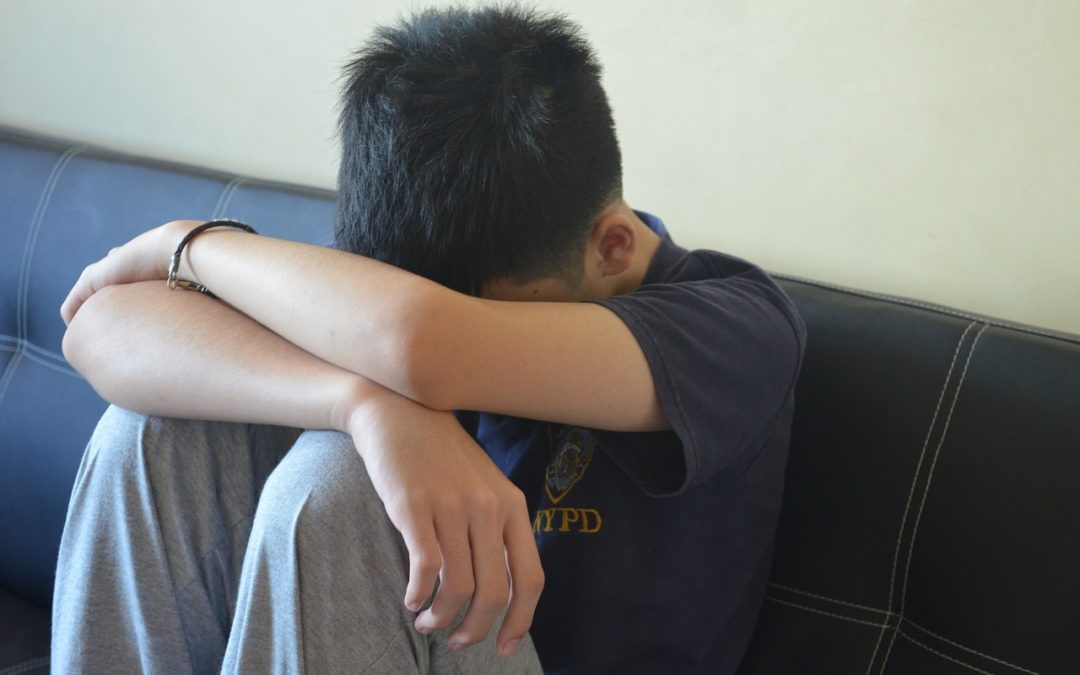
by David Gleason | Feb 15, 2018 | Blog
This is the first of two posts devoted to executive skills in adolescents. In this first post, I focus on the role of executive functions and associated brain development – particularly as these functions/skills pertain to early adolescents enrolled in highly competitive schools – and the dangerous assumptions many educators and parents make about adolescents’ actual executive capacities in these ultra-competitive environments.
In my TEDx Talk, “Are We Overwhelming Our Students??”, I detailed ways in which high school students are over-scheduled, over-pressured, and over-worked. One of the pressures I highlighted was what I consider a “psychological overuse injury” that adults unintentionally inflict on adolescents. Or, as a senior administrator at a prominent independent school articulated this unrealistic and all-too-common expectation, “We expect our students to think like adults and to act like adults before they have actually developed those skill sets.”
In this blog post, I want to explore what ‘adultness’ we are asking of adolescents.
In my experience as an educator and psychologist, the most common adult-like functioning that we’re asking of most adolescents is based on the faulty assumption that their executive function capacities have fully developed. Brain science tells us otherwise.
In my book, At What Cost? Defending Adolescent Development in Fiercely Competitive Schools, I detail five recent neurobiological discoveries that provide clear and indisputable information about normal developmental variation in children’s and adolescents’ brains.
Most Teens’ Brains Haven’t Developed Executive Function Abilities
One of the most important discoveries for educators and parents to understand and respect is that the human cortex develops from back to front, meaning that skills and abilities found in the frontal cortex – like executive function – develop later in life.
This discovery was first observed in a series of postmortem analyses carried out by pediatric neurologist, Dr. Peter Huttenlocher at the University of Chicago Pritzker School of Medicine the 1970s and 1980s. From his research, Dr. Huttenlocher “demonstrated that the frontal cortex is the latest brain region to develop in the human brain. [He] collected numerous postmortem brains from children, adolescents and adults, and found that the frontal cortex was remarkably different in the brains of pre-pubescent children and post-pubescent adolescents.”
Subsequently, psychiatrist Dr. Jay Giedd of the National Institute of Mental Health, using time lapsed photography of MRI scans of the brains of 52 developing children, produced a short video that showed the “ebb and flow of gray matter from ages five to twenty years.”
Remarkably, these MRI scans demonstrated and reinforced what Dr. Huttenlocher had observed many years earlier in his postmortem analyses. Giedd’s research more definitively claimed that brain regions most responsible for “more advanced functions — integrating information from the senses, reasoning, and other ‘executive’ functions (prefrontal cortex) — mature last.”
Giedd’s subsequent research established definitively that the prefrontal cortex — the region of the brain most involved with the development of executive skills — doesn’t fully develop until the late 20s or early 30s.
Isn’t it ironic that those executive skills we think all early adolescent students need first to be successful in school are the very ones that develop last?! We might – and should – ask ourselves: why aren’t all secondary schools teaching and/or coaching these essential skills to all their students?
Unrealistic Expectations and Pressures Can Have Dangerous Impact on Teens
You may be asking, “Why is teaching executive functions to early adolescents so important?” The answer lies in the neurobiological reality that when adolescents are expected to function as if they had developed these skills, then these students are being set up for failure. As a result, many of these teenagers experience crippling anxiety and depression, which often manifest in dangerous emotional conditions: substance abuse, eating disorders, sleep deprivation, cutting and other forms of self-injury, and too often, suicide.
As my friend and colleague, Professor Robert Kegan, has described, since adolescents develop physically in ways that resemble grown adults, and since adolescents also begin to speak and move with the sophistication we associate more with adults than with children, it is all too common for adults to be misled by adolescents’ adult-like appearance and composure, and to then treat those adolescents as if they were adults.
However, Kegan warns in The Evolving Self, “If adults mistake [adolescents’] physiology and/or [their] verbal ability for [their] psychological age, and then expect those adolescents to function as if they’re actually young adults, then it’s the adults who create a situation which is dangerous for both themselves and for the developmentally delayed teenager.” As Kegan asserts, “The cost to a person of being unseen, of being seen as the person-one-might-become rather than the person-one-is, is a bewildering experience of being unfairly demanded of.”
Competitive Schools Can Be Environments for Psychological Overuse Injuries
Increasingly, in highly competitive schools, too many students are “being unseen” for who they actually are, and instead, are being seen as “persons-they-might-become.” Indeed, adolescents being “expected to think [and] act like adults before they have actually developed those skill sets” creates that “bewildering experience of being unfairly demanded of.” This is when students feel helpless, become anxious and depressed, and too frequently, suffer serious mental health crises.
To reinforce this psychological “set up” from a physical and medical perspective, consider the frequency with which highly competitive young athletes experience injuries to their bones’ growth plates because of too much training and not enough rest. The American Academy of Pediatrics has found that up to half of injuries seen in pediatric sports medicine are related to overuse.
Pediatric orthopedic surgeon Dr. Elizabeth Szalay explains“As adults, we can work ourselves to a higher level of performance – add miles or add pounds lifted. But in children, there is a finite point, which can’t be exceeded without damaging the growth plate, and there’s no way to get around that… Kids’ growing bones simply can’t endure the stress that adult bones can. This is when it becomes important for parents to keep their perspective”
Let’s Talk About the Impact of Psychological Overuse Injuries
What does this understanding of physical overuse injuries mean for how we think about adolescent mental and emotional health?
Just as the pediatric muscular skeletal system can’t train in the same way as an adult body, a child’s or adolescent’s neurological system can’t think and act in the same way as adult’s.
In all of my work, I promote what I have termed “developmental empathy,” an approach to teaching, coaching, advising, and parenting children and adolescents in ways that are more carefully aligned with their developmental integrity, in ways that are utterly respectful of children’s and adolescents’ still-developing brains.
From this perspective of developmental empathy, it is simply irresponsible – if not negligent – for educators and parents to do anything else but to commit to educating and parenting children and adolescents accordingly.
In my next post, I’ll explore these themes further and share insights from my recent interview with Michael Delman, Founder, and CEO of Beyond BookSmart, a company that teaches and provides coaching in executive function skills to children, adolescents, and even to young-adult college students.

by David Gleason | Jan 25, 2018 | Blog
A few weeks ago, I had the opportunity to present to the faculty of a local independent school on the topic of the developing adolescent brain. Specifically, they were interested in how they could apply the findings of “The Heart of the Matter: The Adolescent Brain,” chapter five in my book, At What Cost: Defending Adolescent Development in Fiercely Competitive Schools.
Since the school had recently engaged a different speaker who had focused on the intense and competing pressures on students – and since several of this school’s administrators had read my book – they were eager to “home in” on the five recent neurobiological discoveries which I detail in that chapter. These discoveries provide indisputable, authoritative reasons for why any school faculty should strive to be more “developmentally empathic” in its overall approaches to educating their students.
What I want to share with you here is how, during the course of an afternoon, these educators were able to move from the broad topic of the adolescent brain to concrete ideas about how they could introduce changes that would truly embrace developmental empathy into their school environment.
Five Neurobiological Discoveries of Brain Development
Here’s how it unfolded. In my opening presentation, I reviewed the following five neurological discoveries of brain development in adolescents:
- Back to Front Development: The human cortex develops from back-to-front. The prefrontal cortex – the part of the brain most involved with the development of executive functioning skills – does not develop fully until a person reaches their late 20s or even early 30s.
- Limbic System and Prefrontal Cortex – Uneven Development: The brain’s limbic structures (amygdala, hippocampus, etc.) that are responsible for processing and expressing emotions come “online” with full force in the early stages of puberty, long before the prefrontal cortex has the capacity to fully regulate the intensity of the limbic-generated emotions.
- Neuroplasticity: “Neurons that Fire Together, Wire Together:” The brain is “plastic” or pliable; it matures mostly by becoming more connected (white matter), not larger (grey matter) from puberty onward. These neuronal connections are totally dependent on the environments in which they exist or function.
- Environment Shapes the Brain: Interactions between genes and environment shape human development. Early experiences determine both how genes are “turned on and off” and whether or not some genes are even expressed at all. Healthy brain development depends on both how much and when certain genes are activated within the environment to do certain tasks. Essentially, experiences leave chemical signatures (epigenetic markers) that determine whether and how genes are expressed.
- Adolescence is a Developmental Sensitive Period for the Brain: Adolescence is a developmental window of time within which the effects of environmental stimulation – or lack of it – on brain structure and function are maximized because so much brain maturation and development is occurring so rapidly and simultaneously.

With this foundational knowledge about the adolescent brain, the participants assembled in groups around circular tables and worked together to respond to the following question.
“In light of the constant and unrealistic pressures that so many students are experiencing, within your school’s already-sensitive and intentional educational environment, what other ideas/suggestions/changes can you IMAGINE as possible ways of becoming a more developmentally empathic school?”
Social-Emotional Functioning
- Teach social-emotional learning for students in ALL grades
- Schedule more free time for students
- Facilitate students’ connecting with each other in meaningful ways
- Encourage parent education about these neurobiological issues and collaborate with parents about empathic changes for kids\
Academic Work Load
- Reduce the amount of homework we assign: be sure homework reinforces learning and is not homework for the sake of homework
- Review our assumptions about end-of-term assessments. Do we really need them? They put A LOT of pressure on kids.
- Revise our schedule: it is too packed … daily, nightly, and weekly!
- Reconsider our testing and assessment policies for all age groups.
- Prioritize what we really value!
- Remove numerical grades. Imagine NO grades!
Age-Appropriate Expectations
- Review our age and grade level expectations. Are they developmentally appropriate?
- Align our expectations with kids’ development. We are grading many kids on expectations they can’t meet!
- Integrate appropriate study skills instruction within all academic areas for all grades
In summarizing their focused work on these issues, one faculty member stated, “We need to be brave enough to go against the norm … as educators, parents, and as an entire institution.”
To me, the four most important take-aways from this afternoon session – which sparked the creation of this blog post – are the following:
- The members of this entire school’s faculty and administration were eager to learn about the five recent neurodevelopmental discoveries. They were eager for this kind of professional development in their collective effort to become a more developmentally sensitive and empathic school.
- After about a 90-mintute presentation of these five neurodevelopmental discoveries, these faculty members and administrators assembled into working groups and responded to the question (above) that challenged them to “imagine possible ways of becoming a more developmentally empathic school.” That is, they were eager to segue from a broad, scientific presentation to a focused discussion on its implications.
- In less than an hour, this group of about 75 committed teachers and administrators generated a long list of very specific possible ways of becoming a more developmentally empathic school.
- The speed with which they worked and the specificity of their suggestions speaks volumes of their underlying and collective desire to be as “developmentally empathic” as possible.
I applaud this school – and others with whom I have conducted similar workshops – for their focused and deliberate efforts to understand the developmental integrity of the students they teach, and then, to teach to these students accordingly, in ways that are deeply respectful of their students’ actual developmental capacities.
At the end of my work with this motivated group of faculty members and administrators, I reminded them of Margaret Mead’s famous quotation: “Never doubt that a small group of thoughtful, committed citizens can change the world: indeed, it is the only thing that ever has.”

by David Gleason | Oct 18, 2017 | Blog
One of the constant concerns I hear from faculty members, administrators, counselors, and parents of adolescents from all around the world is “We expect them to think and act like adults.” This expectation arises not simply because so many of today’s adolescents, for various reasons, appear physically mature; it’s also because we, adults, assume that in their school lives, adolescent students are fully capable of appropriate “executive skills” in their school work, in their social lives, and in how they cope with the multiple and competing demands we place upon them.
We assume that adolescents are able to manage their time, prioritize homework, juggle athletic practices and community service with regular sleeping and eating, manage their social lives, and their online lives – and somehow, get straight A’s.
But these so-called “executive skills” are part and parcel of a host of neurological capacities that, generally, are not fully developed until humans are 30 years old! What are we missing here?
Expecting Executive Functioning Before Kids’ Brains Have Developed
Thanks to the wonders of neuroimaging, we have learned much about the developing human brain, particularly about how self-regulating executive functions, manifest in the expectations noted above, originate and develop over time.
Executive functions, officially, refer to a host of cognitive processes required to plan and direct various activities, to manage our time and materials effectively, to initiate and follow-through with tasks and expectations, to engage and sustain working memory, to maintain consistent and sustained attention, to inhibit impulses, to understand and regulate our emotions, and to engage in effective goal-directed behavior.
To be sure, these executive skills are needed by all people, at all ages, and in varying degrees, according to the demands of the environments in which they function.
The problem I’m addressing here is that, once again, we – that is, adults — demand these fully-formed executive skills of our kids too early, and we often denigrate the students who don’t “measure up.”
In their Second Edition of Executive Skills in Children and Adolescents, Peg Dawson and Richard Guare noted:
“Schools expect more independent application of previously learned skills, including improved time management, sustained attention to tasks, and self-regulation of behavior. In fact, consistent with this assumption, adults believe that as students age and progress through school, providing continued support may be a disservice to the student, undermining the development of independence and self-management, and creating a roadblock on their path to adulthood. How often have we heard from parents, teachers, and school administrators that students need to be more responsible, self-motivated and independent, and that if we support them or modify tasks they are expected to do, they will not learn to sufficiently manage on their own and will not be prepared for the next level of school development? Such supports are sometimes derogatively referred to as ‘babying’ or ‘enabling the student,’ or as ‘dumbing down’ the task.”
To be blunt, we insult our kids for being…kids.
Academic Transitions are Particularly Perilous Times
Alarmingly, Dawson and Guare highlight what has become a developing trend of “a naturally occurring drop-off in adult and institutional supports” as students leave the lower grades and progress into their middle and high school years.
Significantly, many students are particularly vulnerable during these times of transition – progressing from one grade to the next, and most commonly, moving from one school to another. It is at these times that the presumably learned executive skills, which may have been effective in their previous environment, might not be sufficient to manage the increased demands of their next environment. This means that if we are assuming that the “executive skills” are up and running, and then – as a consequence of these transitions – these presumably learned skills falter, we are (still) blaming our kids for being kids.
Dawson and Guare identify the potential pitfalls of adult assumptions around academic transitions and have strong recommendations:
“We urge school personnel and parents who are involved with students during these transition times to avoid the assumption that because a student moves up a grade [or moves to a new school], that a drop in [her or his academic] performance must be related only to increased demands and more difficult content to which the student will adjust in time. While some of this may be true, these performance problems often relate to greater demands on executive skills that, until now, have not been sufficiently taxed.”
“This is especially true when students move from elementary to middle school, from middle to high school, and from high school to college, where executive skill demands are greatly increased and where teachers often attribute students’ drop in performance to the necessary learning curve, and therefore, to be expected, or to a student’s lack of motivation or responsibility, given the demand for increased effort.”
Since too many schools have worked on the assumption that the least amount of support necessary is useful to help students achieve successfully – and then phase down these supports so the students will gradually internalize them – Dawson and Guare highly recommend:
“Services rarely, if ever, [should] be discontinued across the change of environments (e.g., one year to another, one school to another) since such a discontinuation assumes that the students have sufficiently mastered the skills to transfer to environments with new and unknown demands.”
Given what neuroimaging has recently revealed about the developing human brain, these adults’ assumptions are both flawed and misleading.
Scans Show Executive Functioning Develops Well After Adolescence
Most importantly, this aforementioned “trend of a naturally occurring drop-off in adult and institutional supports [for continued instruction and coaching of executive skills development] as students leave the lower grades and progress into their middle and high school years” stands as a blatant contradiction to what neuroscience has shown, unequivocally, over the past 10 to 20 years.
Specifically, psychiatrist Dr. Jay Giedd of the National Institute of Mental Health, using time-lapsed photography of MRI scans of the brains of 52 developing children, each of whom was scanned four times over a 15-year period, produced a six-second video that showed the ebb and flow of gray matter from ages five to 20 years. These MRI scans not only reinforced but demonstrated, in real, time-lapsed images of living human brains, what researchers had observed many years earlier in postmortem studies in the 1970s and 1980s.
Giedd’s longitudinal research more definitively showed that the first areas of the human brain to mature are those with the most basic functions, such as processing the senses and movement, followed by the areas involved in spatial orientation and language development.
Further, Giedd’s research also showed that the brain areas responsible for more advanced cognitive processes – integrating information from the senses, abstract reasoning and judgment, and other “executive functions” (the prefrontal cortex) mature last – and not fully until the late twenties or early thirties.
As I asked in my book, At What Cost?, isn’t it ironic that the neurocognitive executive skills that, for most people, develop last are the very ones that all new students need first to make a successful transition to high school, particularly to the most rigorous and high achieving schools?
In light of these indisputable findings, why would any school decide either to discontinue or to not even offer instruction and coaching of these executive skills for their still-developing early adolescents, particularly during their times of transition?

by David Gleason | Sep 13, 2017 | Blog
As millions of teenagers return to school after what hopefully has been a restful and restorative summer, an increasingly emphatic question is gathering strength: What time should the school day start?
Over the past few years, more school districts, as well as independent and international schools, have experimented with later start times in their deliberate efforts to “fall in line with research that looks at the biological clock of adolescents.” The results have been significant.
Business Insider author, Chris Weller, for example, describes how, at the Solebury School in New Hope, Pennsylvania, after last year’s decision to move the start time from 8:00 to 8:30 four days per week, and from 8:00 to 9:00 on one day per week, “students are less stressed and performing just as well, if not better, in their classes.”
Reinforcing these findings, superintendent of Dobbs Ferry School District, Dr. Lisa Brady, is also an advocate of later school start times. While she recognizes that delayed start times are growing in popularity, they are still rare. As Dr. Brady noted and as I emphasized in my book, At What Cost? “It has to do with a lack of empathy for pre-teens and teens. I get that years ago, we all walked a hundred miles in the snow to school, but we know better now about the adolescent brain, and we know about their natural sleep rhythms.”
In her wildly popular TEDx Talk, advocating later start times, sleep researcher, Dr. Wendy Troxel, states, “Sleep deprivation among teenagers is an epidemic” and highlights the data:
- About one in ten gets the 8-10 hours of sleep per night recommended by sleep scientists and pediatricians.
- Too many high schools start at 7:30 a.m. – or earlier – despite the fact that major medical organizations recommend that middle schools and high schools start no earlier than 8:30 a.m.
Around puberty, a young adolescent’s biological clock alters, a change driven, in part, by a shift in the release of the sleep-regulating hormone, melatonin. As a result, when they become sleepy and feel most wakeful changes. Teenagers’ bodies begin releasing melatonin later in the evening, around 11:00 p.m., a full two hours later than adults and younger children. Troxel notes, “Waking a teenager up at 6:00 a.m. [to go to school] is the biological equivalent of waking an adult up at 4:00 a.m.”
Chronic Sleep Deprivation has Negative Consequences for Mental and Physical Health
Wouldn’t we adults strongly resist being expected to wake up every day at 4:00 a.m. to begin our work days?
The truth is that chronic sleep deprivation – in adolescents and adults alike – manifests in a variety of unhealthy and dangerous ways: chronic anxiety; attention problems that mimic ADHD; car accidents and associated deaths; and too often, depression and suicide.
As I detail in At What Cost? and Dr. Troxel explains in her TED Talk,
“Advocates of sleep-friendly start times know that adolescence is period of dramatic brain development, particularly in the parts of the brain that are responsible for those higher-order thinking processes, including reasoning, problem solving and good judgement. When teenagers don’t get the sleep they need, their brains, their bodies and their behaviors suffer with both immediate and lasting effects.”
Alarmingly, in one study cited by Dr. Troxel with over 30,000 high school students, for each hour of lost sleep, there was a 38% increase in students’ feeling sad or hopeless, and a 58% increase in teen suicide attempts.
Study: Later School Start Times Have Economic Benefits
Adding another incentive to this school-start-time debate are the results of an exhaustive new study by the RAND Corporation and RAND Europe that examined the costs and benefits of proposed later school start times. That study found that 8:30 a.m. start times could add as much as $83 billion to the US economy over the next ten years. Marco Hafner, lead author of this study said in an interview “The increase in high school graduation rates and decrease in health concerns, such as rates of obesity and car crashes due to sleeplessness should more than make up for the hassles of putting the policy in place.”
Encouraging Schools to Make “Developmentally Empathic” Changes
At numerous schools and conferences in recent months, I have spoken of the many ways we can begin making “developmentally empathic” changes to reflect our increased understanding of the developing adolescent brain, particularly in light of how uniformly schools acknowledge that they overschedule, overwork, and may even overwhelm the adolescents for whom they are responsible.
In my book and in my presentations, I do not, and cannot, prescribe specific changes that all schools should make, as I know and respect the ways in which all schools differ, as each one has certain features, policies and traditions that make it unique. It is for these reasons that schools need to consider which “developmentally empathic” changes they need to make in light of their own cultures and historical practices.
Educators and Parents Alike See the Benefits to Later School Start Times
Nonetheless, at every forum at which I speak, unfailingly, at least one teacher, administrator, or parent has asked: “I know you can’t tell us what specific changes we need to make, but is there a single, most important change that all schools should be making in order to be ‘developmentally empathic?’” To this inevitable question, my response has been the same: “While I will gladly tell you what I think is the most important change to make, tell me, first, what you think I am going to recommend.” And again, unfailingly, these individuals – teachers, administrators, and parents alike – say “Later school start times?” To which I respond with a resounding “yes!”
In my experience, these intelligent, perceptive, and empathic adults know that changing school start times to 8:30 or later is indeed one of the most “developmentally empathic” changes they can make.
Unfortunately, many of these same adults get bogged down by competing arguments about the logistical challenges of reorganizing bus schedules; about needing to alter the practice and game times of after-school sports; or about arranging for appropriate child care before or after school. These are, indeed, legitimate concerns. However, these are “adaptive challenges” we can work through, and as Dr. Troxel declares, “These problems are NOT valid excuses for failing to do the right thing for our children … which is to start middle and high schools no earlier than 8:30 a.m.”
Are we ready to resolve this years-long debate and ensure that all middle and high schools would be starting at 8:30 or later? What do you think? I welcome your comments and questions.

by David Gleason | Aug 15, 2017 | Blog
“America sees alarming spike in middle school suicide rate” reads the headline of recent USA Today article, which cites research showing “the suicide rate among 10- to 14-years olds doubled between 2007 and 2014…surpassing the death rate in that same age group from car crashes.”
(more…)

by David Gleason | Jul 17, 2017 | Blog
If We’re All in this Together, Why Do We Expect Students to Change Culture of School Stress?
Earlier this year, a high school student in suburban Chicago wrote a petition in which she criticized her school “for putting too much pressure on students to succeed academically” and called on schools to “treat students like people with dreams and not just test scores.”
Students Shine Light on Fiercely Competitive Academic Culture
Only one day after its posting on Change.org, the petition had nearly 700 signatures. In the next few weeks, more than 1,900 people signed the online document.
Two and a half years earlier, a student at Henry M. Gunn High School in Palo Alto, posted a video on YouTube with a similar plea, just hours after one of her friends died by suicide (the seventh such death in that high school in the previous five years). She claimed “the amount of stress on students is ridiculous” and that “seven AP classes should not be a social norm.”
Of course, ANY student’s death by suicide is a tragedy that evokes considerable anguish in the forms of grief, sorrow, anxiety, and sometimes, guilt. As a psychologist who has been involved with similar incidents over many years, I want to acknowledge the tremendous pain that entire schools and local communities experience in the aftermath of a student’s death by suicide. To be sure, the issues of “too much pressure on students” and of associated death by suicide are complicated and very painful.
At the same time, though, it is vital that we step back from the individual tragedies and ask ourselves more about what is actually going on here — not just in these two schools but in competitive schools everywhere.
Response to Tragedy Often Focuses on Students’ Need to Improve Coping Mechanisms
In both of these schools – one in 2014, another in 2017 – the primary response to these student-generated pleas was for school officials to organize various ways for the students to get more help, for the students to seek counseling, and for the students to learn how to cope more effectively with the daily pressures they face. As a provider of these counseling services, I know that these ancillary services will always be important and necessary.
But when do we ask the adults to change? When do the adults make changes in how they operate, live, and work? After all, it is the adults who – unintentionally – are imposing all of this pressure on students in the first place.
Fortunately, Dr. Dan Bridges, the superintendent of the school district from which the Change.org petition originated, wisely acknowledged the need for broader institutional and community change: “It will take a cooperative effort among the entire community — indeed, all of the suburban region — to solve the excessive pressures placed on high school students. The solution, just like the problem, must come from all sides.”
Dr. Bridges’ insightful words reinforce the title this post –We’re All in This Together — and of the final chapter of my book, At What Cost? Defending Adolescent Development in Fiercely Competitive Schools, [link title to ] in which I explore these challenging, systemic issues in greater detail.
What do you think? What changes do we all have to make in order to create less-pressured schools for our teenagers?








